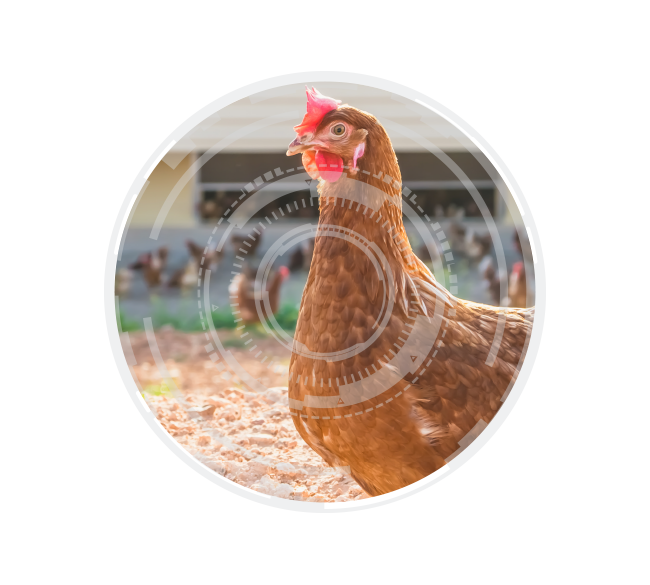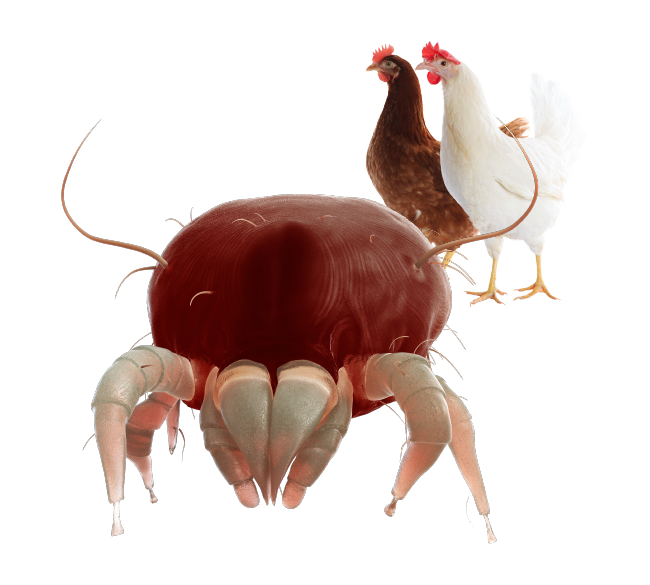Introduction
With the increasing use of floor housing systems in the layer industry, the adaptability of laying hens under these management conditions has become of special interest for primary breeders. The breeding goal is to produce as many saleable eggs as possible per hen housed in a laying period, i.e. clean eggs to be collected in the nest and not misplaced somewhere else in the system. As a working hypothesis, it can be assumed that genetic differences exist between and within lines in pre-laying behaviour, search for a nest, duration of stay in the nest and the resulting distribution of oviposition throughout the day. Differences in the nesting behaviour may affect the number of nest boxes necessary to minimise floor eggs. Commercial egg producers prefer hens which e.g. actively use different tiers in an aviary system, visit the nest box only shortly before oviposition, lay the egg quickly and then leave the nest as soon as possible to make room for other hens.To analyse relevant behaviour parameters, it is first of all necessary to develop a reliable technical system which permits the recording of reliable individual data under practical conditions. At the Experimental Station of the TU Munich-Weihenstephan, the “Weihenstephan funnel nest box” was developed for this purpose. The function of this single nest box can has been described by THURNER et al. (2005).
Figure 1: Experimental unit with 48 single nest boxes for individual testing in floor housing systems
 The most important nesting behaviour
trait, nest acceptance, is largely
influenced by training and management,
beginning during the rearing period. After
transfer to the production house, adjust —
ment of the laying nests to the require —
ments of the hens and frequent collection
of misplaced eggs are important to
minimise misplaced eggs. After a test flock has been properly trained and started production, data
can be collected to answer the question: to what extent is the variation in nesting behaviour genetically
determined and can thus be used as basis for genetic improvement?
Previous studies based on time-consuming video analysis of a limited number of hens or labourintensive trap nests suggest that the behaviour (social arrangement) of the hens in small groups
differs from typical large commercial flocks. If data are collected for genetic improvement, it is essential
that the testing conditions simulate conditions in commercial units.
The most important nesting behaviour
trait, nest acceptance, is largely
influenced by training and management,
beginning during the rearing period. After
transfer to the production house, adjust —
ment of the laying nests to the require —
ments of the hens and frequent collection
of misplaced eggs are important to
minimise misplaced eggs. After a test flock has been properly trained and started production, data
can be collected to answer the question: to what extent is the variation in nesting behaviour genetically
determined and can thus be used as basis for genetic improvement?
Previous studies based on time-consuming video analysis of a limited number of hens or labourintensive trap nests suggest that the behaviour (social arrangement) of the hens in small groups
differs from typical large commercial flocks. If data are collected for genetic improvement, it is essential
that the testing conditions simulate conditions in commercial units.
Research on nesting behaviour in floor systems
Since 2005, the Institute for Agricultural Engineering and Animal Husbandry of the Bavarian State Research Centre for Agriculture and Lohmann Tierzucht GmbH have cooperated in developing nest boxes for individual laying performance and nesting behaviour of laying hens at the experimental station Thalhausen. With the aid of the Weihenstephan Funnel Nest Box (FNB), the daily egg number, nest acceptance, exact oviposition time and the duration of stay in a nest box are automatically recorded for each hen in flocks of up to 360 layers. Transponder technology is used in combination Since 2005, the Institute for Agricultural Engineering and Animal Husbandry of the Bavarian State Research Centre for Agriculture and Lohmann Tierzucht GmbH have cooperated in developing nest boxes for individual laying performance and nesting behaviour of laying hens at the experimental station Thalhausen. With the aid of the Weihenstephan Funnel Nest Box (FNB), the daily egg number, nest acceptance, exact oviposition time and the duration of stay in a nest box are automatically recorded for each hen in flocks of up to 360 layers. Transponder technology is used in combinationFigure 2: View of a Weihenstephan
Funnel Nest Box
 Selection criteria for nesting behaviour
Selection criteria for nesting behaviour
Nest acceptance
In analysing components of nesting behaviour, main focus is on nest accep — tance, i.e. counting the number of “saleable” eggs laid in the nest. At the experimental station Thalhausen, distinctly different white-egg and brown-egg strains of Lohmann origin were performance-tested in pens for 360 hens, equipped with Funnel Nest Boxes. Daily nest visits were recorded with oviposition time for each hen during a period of up to one year. On the basis of the recorded number of nest eggs per hen, a family breeding value can be estimated for egg production, taking into account nest acceptance, which is then combined with traditional selection criteria in a selection index.Figure 3: A hen in three phases: entering the nest, staying inside and leaving the nest.

Oviposition time
Based on individual records of the exact oviposition time we were able to compare the laying pattern of different lines of brown-egg and white-egg layers. It was found that most brown eggs were laid about two hours after the lights were turned on, whereas a high percentage of the white-egg layers started looking for a nest three hours after the beginning of the light day. The brown-egg layers had already reached the maximum of their daily production three hours after the lights came on, the whiteegg laid most of their eggs six hours after the light day began. As shown in figure 4, the White Leghorn line concentrated the nest visits in two hours, whereas the brown-egg line spread the nest visits over four hours. Such a short time period in which most of the eggs were laid has also been found by many other authors as e.g. LILLPERS (1993) and ZAKARIA et al. (2005), but the time of the day for this period differed. While ZAKARIA et al. (2005) observed broiler breeder flocks in the morning, LILLPERS (1993) noticed that the early afternoon was a main egg laying period for a flock of White Leghorns housed in individual cages.Figure 4: Distribution of oviposition time during the day for two different strains

Duration of stay in the nest
The narrow range of white-egg layers in terms of their oviposition time, combined with longer nest occupation per egg laid, means that more nest space is needed compared to the brown-egg layers to avoid misplaced eggs due to unavailability of nests when needed. While the brown-egg layers stayed an average of 30 minutes in the nests, the white-egg layers spent 45 minutes in the nest for each oviposition. Shorter occupation times for white layers, in a similar range as reported by ICKEN et al. (2009) for brown layers, were found by ZUPAN et al. (2008). Nest visits without oviposition were mainly observed at the beginning of the laying period, when hens have the habit to explore their new environment. Nest visits without oviposition lasted an average of 10 minutes for brown layers and nearly half an hour for white layers.Table1: Average oviposition time and duration of stay in the nest for brown and white layers

Reducing the duration of stay in the nest would be desirable, if this can be achieved by selection. Apart from less investment for nests, soiling of nests and eggs could be reduced. However, possible negative correlations have to be kept in mind: hens which try hard to find a nest, may also want to stay longer in it. The final objective must be to collect of maximum number of saleable eggs from hopefully happy hens!
Time interval between ovipositions
As a component of total egg production, the variation in difference between two ovipositions could also be analysed from the detailed data. In table 2, individual hens of four different flocks were classified by their mean time interval in a laying sequence. We were surprised to find that up to 22 % of the hens laid two eggs with normal shells within less than 24 hours. Conspicuously, these hens did not have the highest laying performance. They laid fewer eggs than the hens which belong to the second category with an average time interval between 24 hours and 24 hours and 15 minutes. The relation between both traits is not linear, but our results tend to support the earlier observation of ATWOOD (1929), who found in a flock of 172 laying hens that shorter time intervals were associated with longer clutch lengths and higher total egg production. Later investigations of BEDNARCZYK et al. (2000) on more than 2000 layers also support these relationships and suggest that clutch traits may be effectively used in the selection index for laying hens.Table 2: Percentage of hens in different time interval categories and corresponding laying
performance

Conclusion
With the Weihenstephan Funnel Nest Box, individual egg recording in floor housing systems has been made possible. The data collected provide interesting information about the oviposition time and duration of stay in the nests. Used for pedigreed hens from a primary breeding program, the data can be integrated in the current breeding program. Lohmann Tierzucht has started to add parameters of laying behaviour to conventional selection criteria, i.e. egg production, feed efficiency and egg quality, to adapt the performance profile of white-egg and brown-egg layers to future world market demands.Zusammenfassung
Das Weihenstephaner Muldennest zeigt, dass eine Leistungsprüfung von Legehennen in alternativen Haltungssystemen möglich ist, und liefert darüber hinaus interessante Informationen bezüglich des Eiablagezeitpunktes und der Nestaufenthaltsdauer, die von wirtschaftlicher Relevanz sind. Da diese Form der Leistungsprüfung an Tieren mit Abstammung und individueller Kennzeichnung erfolgt, können die Daten direkt in das laufende Zuchtprogramm integriert werden. Damit stellt die Lohmann Tierzucht die Selektion der Zuchttiere auf eine noch breitere Basis. Neben der Futterverwertung und Eiqualität steht die Zahl verkaufsfähiger Nesteier ganz oben in der Prioritätenliste.ATWOOD, H.; 1929: Observations concerning the time factor in egg production. Poultry Science 8: 137-140.
BEDNARCZYK, M., K. KIECTZEWSKI, T. SWACZKOWSKI; 2000: Genetic parameters of the traditional selection traits and some clutch traits in a commercial line of laying hens. Archiv für Geflügelkunde 64:129-133.
ICKEN, W., S. THURNER, D. CAVERO, M. SCHMUTZ, G. WENDL und R. PREISINGER; 2009: Analyse des Nestverhaltens von Legehennen in der Bodenhaltung. Archiv für Geflügelkunde 73:102-109.
LILLPERS, K. (1993): Oviposition patterns and egg production in domestic hen. Dissertation, Swedish University of Agricultural Science, Department of Animal Breeding and Genetics, Uppsala.
THURNER, S., G. WENDL, R. PREISINGER, G. FRÖHLICH, S. BÖCK und R. WEINFURTNER (2005): Entwicklung eines automatischen Legenestes zur einzeltierbezogenen Erfassung von Verhaltens- und Leistungsparametern bei Legehennen in artgerechter Gruppenhaltung. In: Aktuelle Arbeiten zur artgemäßen Tierhaltung 2005, KTBL-Schrift 441, 274-283.
ISBN:3-7843-2189-5.
ZAKARIA, A.H., P.W. PLUMSTEAD, H. ROMERO-SANCHEZ, N. LEKSRISOMPONG, J. OSBORNE and J. BRAKE (2005): Oviposition pattern, egg weight, fertility, and hatchability of young and old broiler breeders. Poultry Science 84: 1505- 1509.
ZUPAN, M., A. KRUSCHWITZ, T. BUCHWALDER, B. HUBER-EICHER and I. ŜTUHEC (2008): Comparison of the prelaying behaviour of nest layers and litter layers. Poultry Science 87: 399-404.








